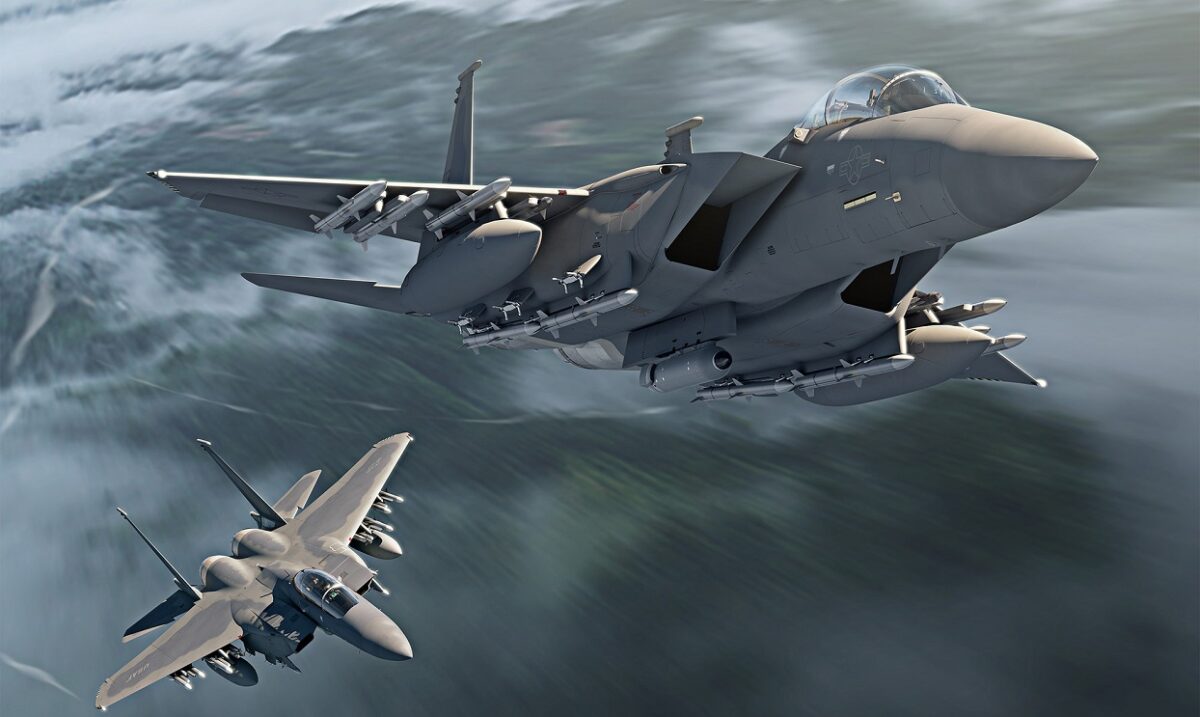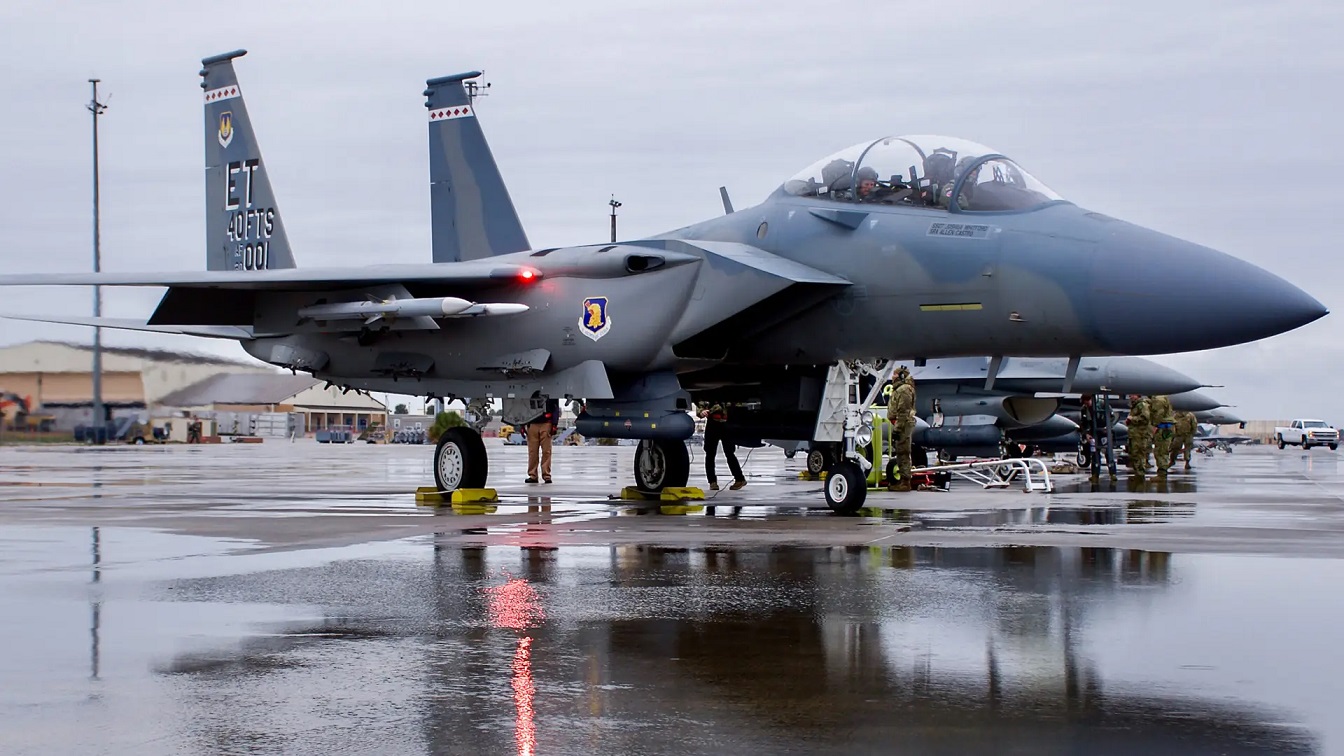The F-15EX Is Special, But No F-35 Replacement: Earlier this year, while flying over the Gulf of Mexico, the United States Air Force’s newest fighter successfully fired an AIMD-120D missile. It was heralded as a significant step forward that highlighted the capabilities of that combat aircraft, and how the jet could function as a long-range, standoff weapons system – able to shoot from a considerably increased range that is farther than any other fighter in the Air Force’s arsenal.
That fighter was the Boeing F-15EX Eagle II, which has been touted as a “ready-now” replacement for the F-15C. It features next-generation technologies that provide improved survivability that could make it an affordable fighter to complement the fifth-generation fleet of Lockheed Martin F-35 Lightning IIs.
Much More Than the F-15: The Pros
The F-15EX is a two-seat all-weather, multirole fighter that offers enhanced capabilities that are completely unique to the U.S. Air Force. It is a greatly enhanced upgraded aircraft based on the McDonnell Douglas F-15 Eagle, which first entered service back in 1976, just months before the United States bicentennial celebrations. The twin-engine, all-weather tactical F-15 has had one of the most successful track records of modern fighters, with more than 100 victories and no losses in aerial combat. The aircraft’s design also proved flexible enough that an improved all-weather strike derivative, the F-15E Strike Eagle, was later developed and entered service in 1989.
Among the advancements with the F-15EX are its fly-by-wire flight controls, new weapons stations, new electronic warfare suite, advanced radar and computer, conformal fuel tanks, and a strengthened airframe. The improved F-15EX also features a deep magazine that will allow it to carry a load of advanced weapons – yet with a 28 percent larger payload than the F-15E. At the same time, the fighter will also require only minimal transitional training and little additional manpower from the older versions of the F-15. According to the Air Force, it has also required little to no infrastructure changes.
The Air Force has estimated that the F-15EX fighter shares about 70 percent of parts with the current F-15Cs and F-15Es that it will be replacing. In addition, the original production lines in St. Louis are still in place, while the aircraft’s training facilities, maintenance depots, and other infrastructure can also be readily shifted to F-15EX support. The result is a fighter will be easier to build and quicker to put into service, while it will also result in a platform that can be more easily maintained over an equal number of F-35s.
The F-15EX Still Isn’t an F-35: The Cons
Despite the enhancements offered by the F-15EX, it still isn’t a fifth-generation aircraft. It doesn’t have stealth capabilities, but it also lacks the computing, data analysis, and sensor integration that helps define a fifth-generation fighter.
The F-15EX should be seen as a very good fighter – arguably one of the best developed in the 20th century, but its design has been taken about as far as it can go. As Air Force magazine reported in 2019, Boeing has proposed other upgrades including the F-15 “Silent Eagle,” which would have added stealth characteristics including an internal weapons bay, as well as an F-15 2040C that could have increased the payload and added advanced avionics, the fact remains an old design can only be taken so far.

Two Boeing F-15EX fighters armed with air-to-air missiles. Boeing handout.
Thus the F-15EX is a solid replacement for the F-15C, and it will certainly have a role alongside the F-35, but it shouldn’t be seen as a low-cost replacement. To put it simply, sometimes you can put an addition on the house to increase the living space, but other times it is necessary to tear it down and build a new house from scratch. We’ve likely reached the limit of what can be added to the F-15.
Expert Biography: A Senior Editor for 1945, Peter Suciu is a Michigan-based writer who has contributed to more than four dozen magazines, newspapers, and websites with over 3,000 published pieces over a twenty-year career in journalism. He regularly writes about military hardware, firearms history, cybersecurity, and international affairs. Peter is also a Contributing Writer for Forbes. You can follow him on Twitter: @PeterSuciu.

